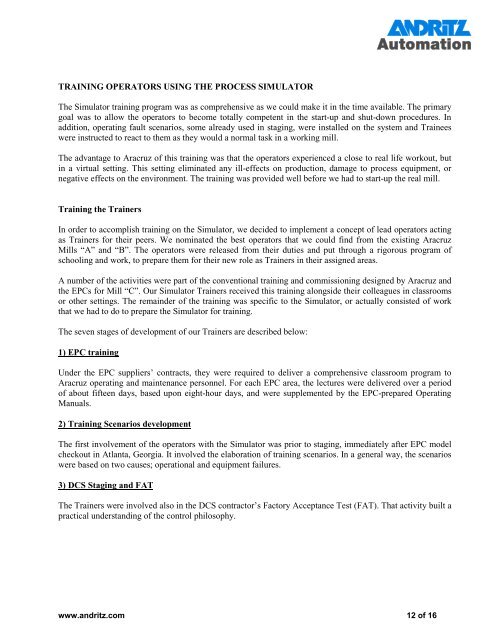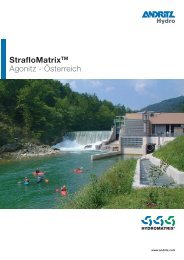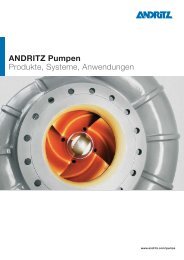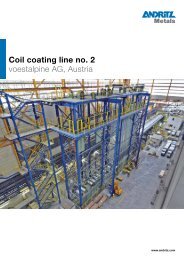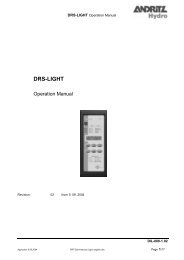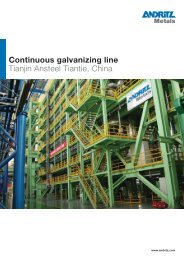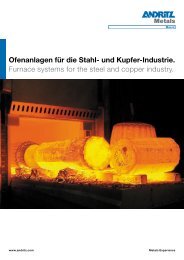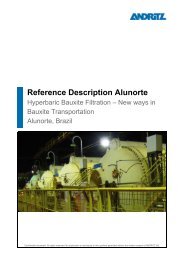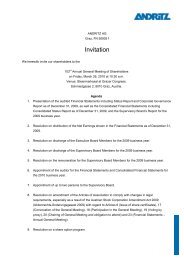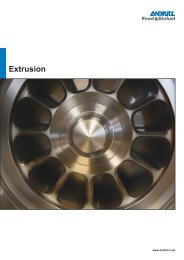Aracruz Uses a Dynamic Simulator for Control System ... - Andritz
Aracruz Uses a Dynamic Simulator for Control System ... - Andritz
Aracruz Uses a Dynamic Simulator for Control System ... - Andritz
You also want an ePaper? Increase the reach of your titles
YUMPU automatically turns print PDFs into web optimized ePapers that Google loves.
TRAINING OPERATORS USING THE PROCESS SIMULATOR<br />
The <strong>Simulator</strong> training program was as comprehensive as we could make it in the time available. The primary<br />
goal was to allow the operators to become totally competent in the start-up and shut-down procedures. In<br />
addition, operating fault scenarios, some already used in staging, were installed on the system and Trainees<br />
were instructed to react to them as they would a normal task in a working mill.<br />
The advantage to <strong>Aracruz</strong> of this training was that the operators experienced a close to real life workout, but<br />
in a virtual setting. This setting eliminated any ill-effects on production, damage to process equipment, or<br />
negative effects on the environment. The training was provided well be<strong>for</strong>e we had to start-up the real mill.<br />
Training the Trainers<br />
In order to accomplish training on the <strong>Simulator</strong>, we decided to implement a concept of lead operators acting<br />
as Trainers <strong>for</strong> their peers. We nominated the best operators that we could find from the existing <strong>Aracruz</strong><br />
Mills “A” and “B”. The operators were released from their duties and put through a rigorous program of<br />
schooling and work, to prepare them <strong>for</strong> their new role as Trainers in their assigned areas.<br />
A number of the activities were part of the conventional training and commissioning designed by <strong>Aracruz</strong> and<br />
the EPCs <strong>for</strong> Mill “C”. Our <strong>Simulator</strong> Trainers received this training alongside their colleagues in classrooms<br />
or other settings. The remainder of the training was specific to the <strong>Simulator</strong>, or actually consisted of work<br />
that we had to do to prepare the <strong>Simulator</strong> <strong>for</strong> training.<br />
The seven stages of development of our Trainers are described below:<br />
1) EPC training<br />
Under the EPC suppliers’ contracts, they were required to deliver a comprehensive classroom program to<br />
<strong>Aracruz</strong> operating and maintenance personnel. For each EPC area, the lectures were delivered over a period<br />
of about fifteen days, based upon eight-hour days, and were supplemented by the EPC-prepared Operating<br />
Manuals.<br />
2) Training Scenarios development<br />
The first involvement of the operators with the <strong>Simulator</strong> was prior to staging, immediately after EPC model<br />
checkout in Atlanta, Georgia. It involved the elaboration of training scenarios. In a general way, the scenarios<br />
were based on two causes; operational and equipment failures.<br />
3) DCS Staging and FAT<br />
The Trainers were involved also in the DCS contractor’s Factory Acceptance Test (FAT). That activity built a<br />
practical understanding of the control philosophy.<br />
www.andritz.com 12 of 16


